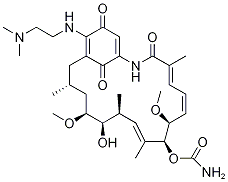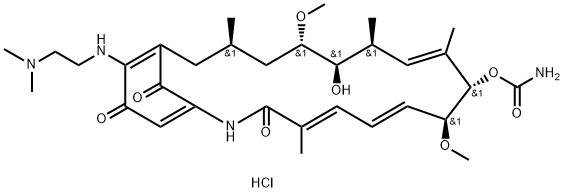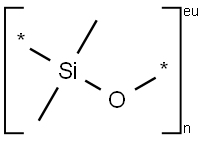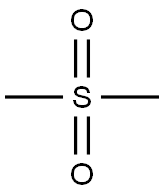Alvespimycin
- CAS NO.:467214-20-6
- Empirical Formula: C32H48N4O8
- Molecular Weight: 616.75
- MDL number: MFCD08457919
- SAFETY DATA SHEET (SDS)
- Update Date: 2024-11-19 20:33:22

What is Alvespimycin?
Description
Geldanamycin is a potent inhibitor of Hsp90 that has poor water solubility. 17-
Chemical properties
Solid
The Uses of Alvespimycin
17-DMAG is an analogue of Gelamycin (G304500) and 17-(Allylamino)geldanamycin (A549650). 17-DMAG acts as a Hsp90 inhibitor and displays more potent antitumor activity than 17-AAG.
The Uses of Alvespimycin
The labelled derivative of the analogue of Gelamycin (G304500) and 17-(Allylamino)geldanamycin (A549650). It acts as a Hsp90 inhibitor and displays more potent antitumor activity than 17-AAG.
The Uses of Alvespimycin
17-DMAG is a synthetic Geldanamycin derivative and inhibitor of Hsp90.
What are the applications of Application
17-DMAG is a synthetic Geldanamycin derivative and inhibitor of Hsp90
Definition
ChEBI: A 19-membered macrocyle that is geldanamycin in which the methoxy group attached to the benzoquinone moiety has been replaced by a 2-(N,N-dimethylamino)ethylamino group.
Biological Activity
Water-soluble analog of 17-AAG (17-Demethoxy-17-(2-propenylamino)geldanamycin ) and geldanamycin (9,13-Dihydroxy-8,14,19-trimethoxy-4,10,12,16-tetramethyl-2-azabicyclo[16.3.1]docosa-4,6,10,18,21-pentaene-3,20,22-trione, 9-carbamate ). Binds the ATP binding site of Hsp90 and inhibits its chaperone activity. Displays more potent antitumor activity than 17-AAG (mean GI 50 values are 53 and 123 nM for 17-DMAG and 17-AAG respectively).
Properties of Alvespimycin
| Melting point: | >270°C (dec.) |
| Boiling point: | 810.5±65.0 °C(Predicted) |
| Density | 1.20 |
| storage temp. | Desiccate at -20°C |
| solubility | DMSO (Slightly), Methanol (Slightly) |
| form | Solid |
| pka | 8.48±0.70(Predicted) |
| color | Very Dark Purple |
Safety information for Alvespimycin
| Signal word | Warning |
| Pictogram(s) |
 Exclamation Mark Irritant GHS07 |
| GHS Hazard Statements |
H315:Skin corrosion/irritation H319:Serious eye damage/eye irritation H335:Specific target organ toxicity, single exposure;Respiratory tract irritation |
| Precautionary Statement Codes |
P261:Avoid breathing dust/fume/gas/mist/vapours/spray. P271:Use only outdoors or in a well-ventilated area. P280:Wear protective gloves/protective clothing/eye protection/face protection. |
Computed Descriptors for Alvespimycin
New Products
4-AMINO-TETRAHYDRO-PYRAN-4-CARBOXYLIC ACID HCL 4-(Dimethylamino)tetrahydro-2H-pyran-4-carbonitrile 4-Aminotetrahydropyran-4-carbonitrile Hydrochloride (R)-3-Aminobutanenitrile Hydrochloride 3-((Dimethylamino)methyl)-5-methylhexan-2-one oxalate 1,4-Dioxa-8-azaspiro[4.5]decane 5-Bromo-2-nitropyridine Nimesulide BP Aceclofenac IP/BP/EP Diclofenac Sodium IP/BP/EP/USP Mefenamic Acid IP/BP/EP/USP Ornidazole IP Diclofenac Potassium THOMAIND PAPER PH 2.0 TO 4.5 1 BOX BUFFER CAPSULE PH 9.2 - 10 CAP SODIUM CHLORIDE 0.1N CVS ALLOXAN MONOHYDRATE 98% PLATINUM 0.5% ON 3 MM ALUMINA PELLETS (TYPE 73) LITHIUM AAS SOLUTION 2-Bromo-1-(bromomethyl)-3-chloro-5-nitrobenzene 2-Bromo-3-nitroaniline N-(3-Hydroxypropyl)-N-methylacetamide 3-Bromo-6-chloropyridazine 4-ethyl-3-nitrobenzoic acidRelated products of tetrahydrofuran








You may like
-
 17-DMAG CAS 467214-20-6View Details
17-DMAG CAS 467214-20-6View Details
467214-20-6 -
 1-Methyl-6-oxo-1,6-dihydropyridazine-3-carbonitrile 98%View Details
1-Methyl-6-oxo-1,6-dihydropyridazine-3-carbonitrile 98%View Details
99903-60-3 -
 1823368-42-8 98%View Details
1823368-42-8 98%View Details
1823368-42-8 -
 2-(3-(tert-butyl)phenoxy)-2-methylpropanoic acid 1307449-08-6 98%View Details
2-(3-(tert-butyl)phenoxy)-2-methylpropanoic acid 1307449-08-6 98%View Details
1307449-08-6 -
 Ethyl 3-(furan-2-yl)-3-hydroxypropanoate 25408-95-1 98%View Details
Ethyl 3-(furan-2-yl)-3-hydroxypropanoate 25408-95-1 98%View Details
25408-95-1 -
 2-Chloro-5-fluoro-1-methoxy-3-methylbenzene 98%View Details
2-Chloro-5-fluoro-1-methoxy-3-methylbenzene 98%View Details
1805639-70-6 -
 1784294-80-9 98%View Details
1784294-80-9 98%View Details
1784294-80-9 -
 Lithium ClavulanateView Details
Lithium ClavulanateView Details
61177-44-4